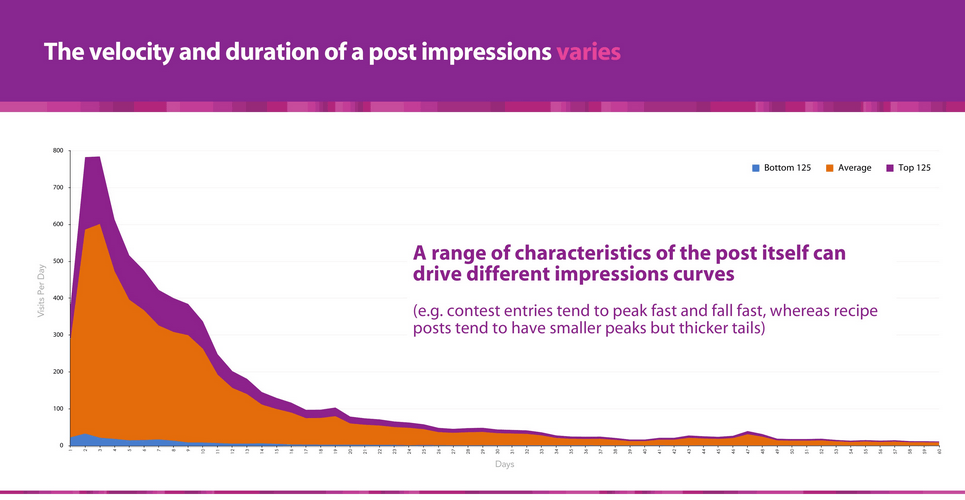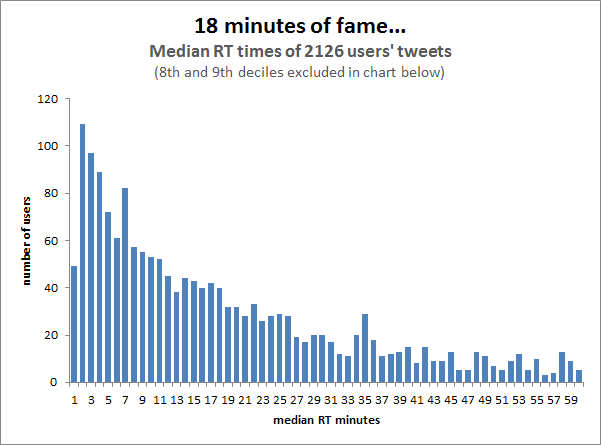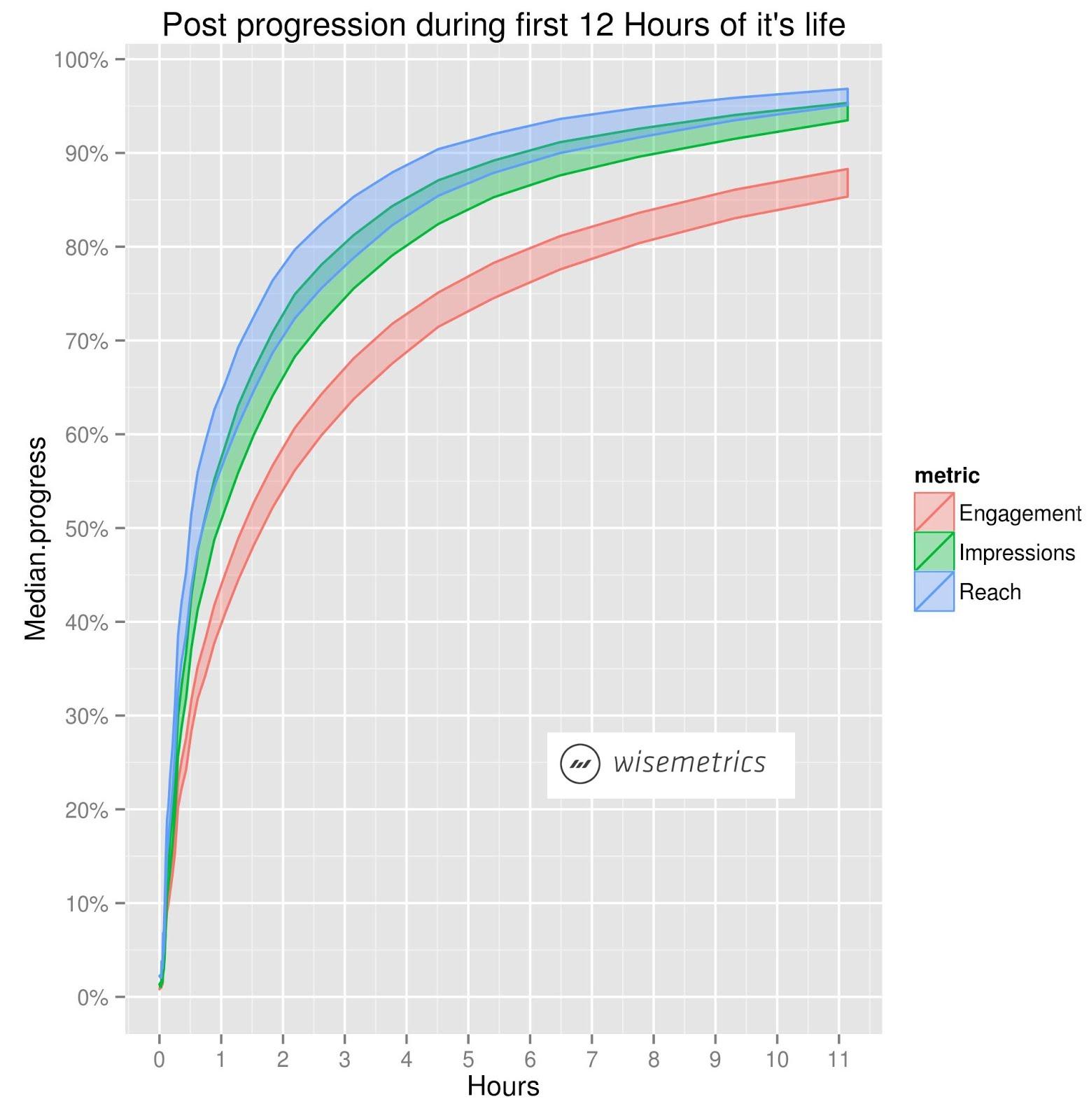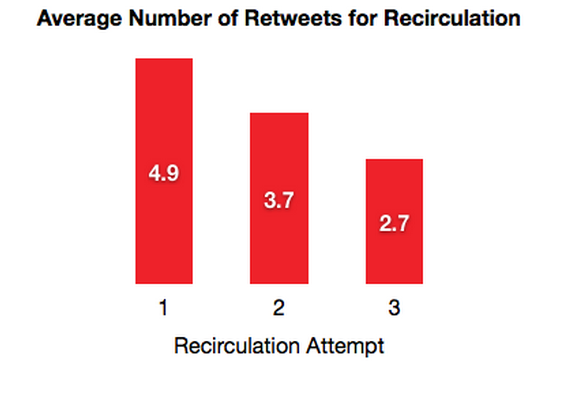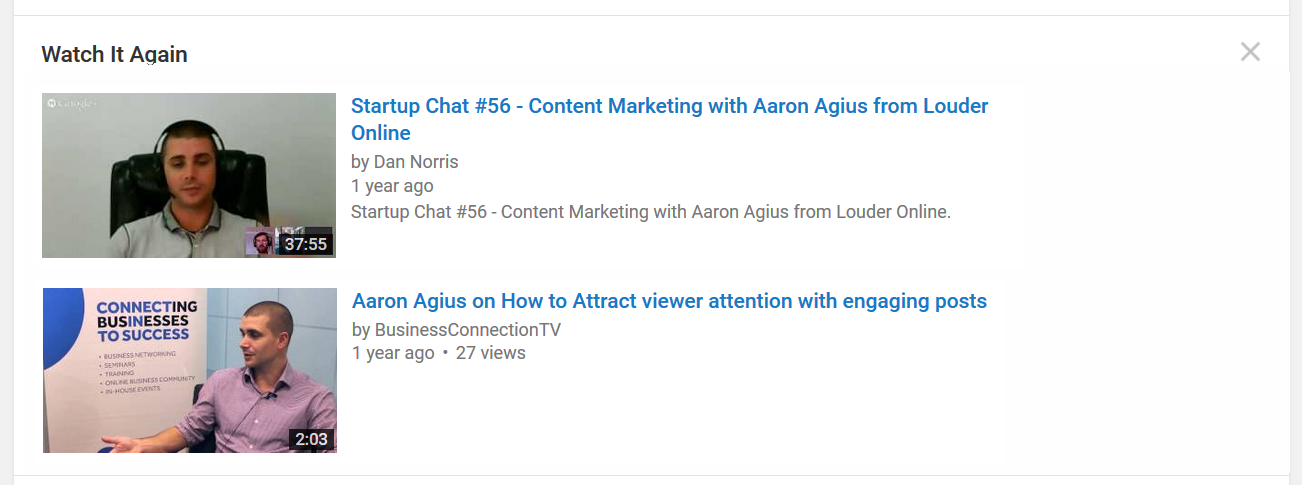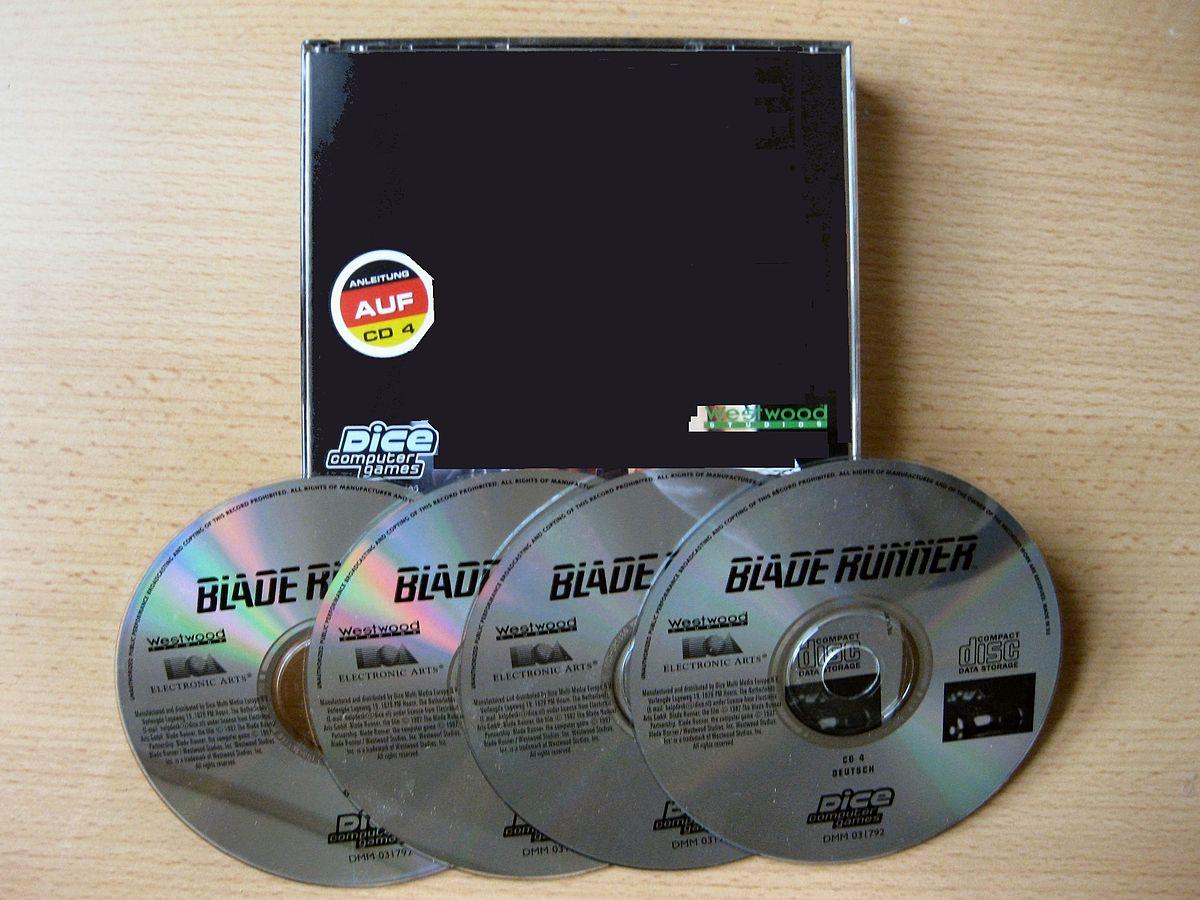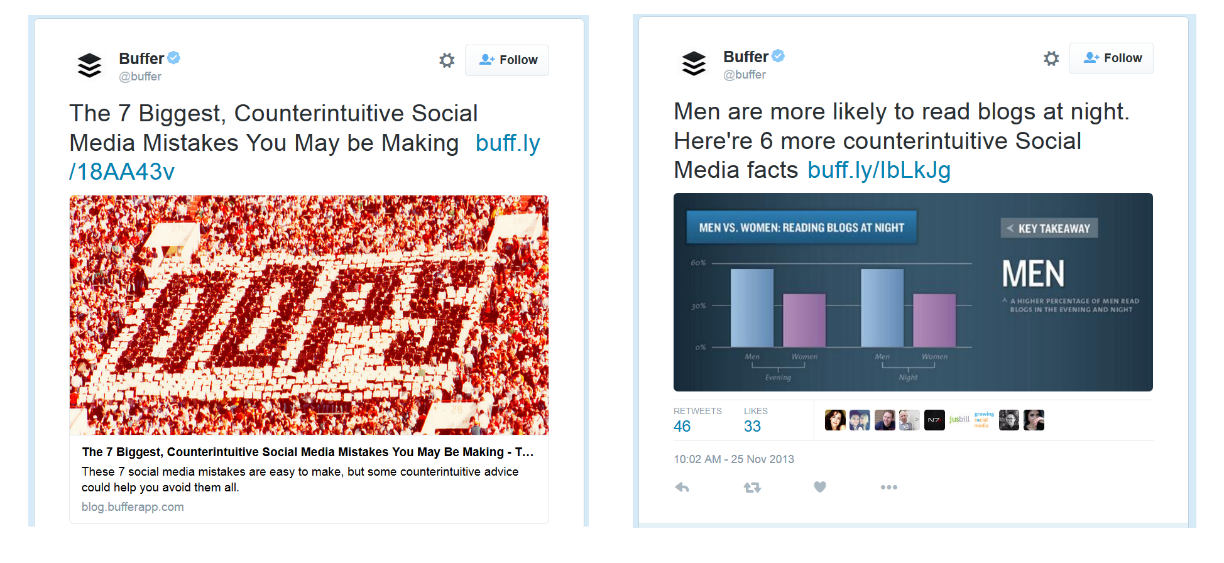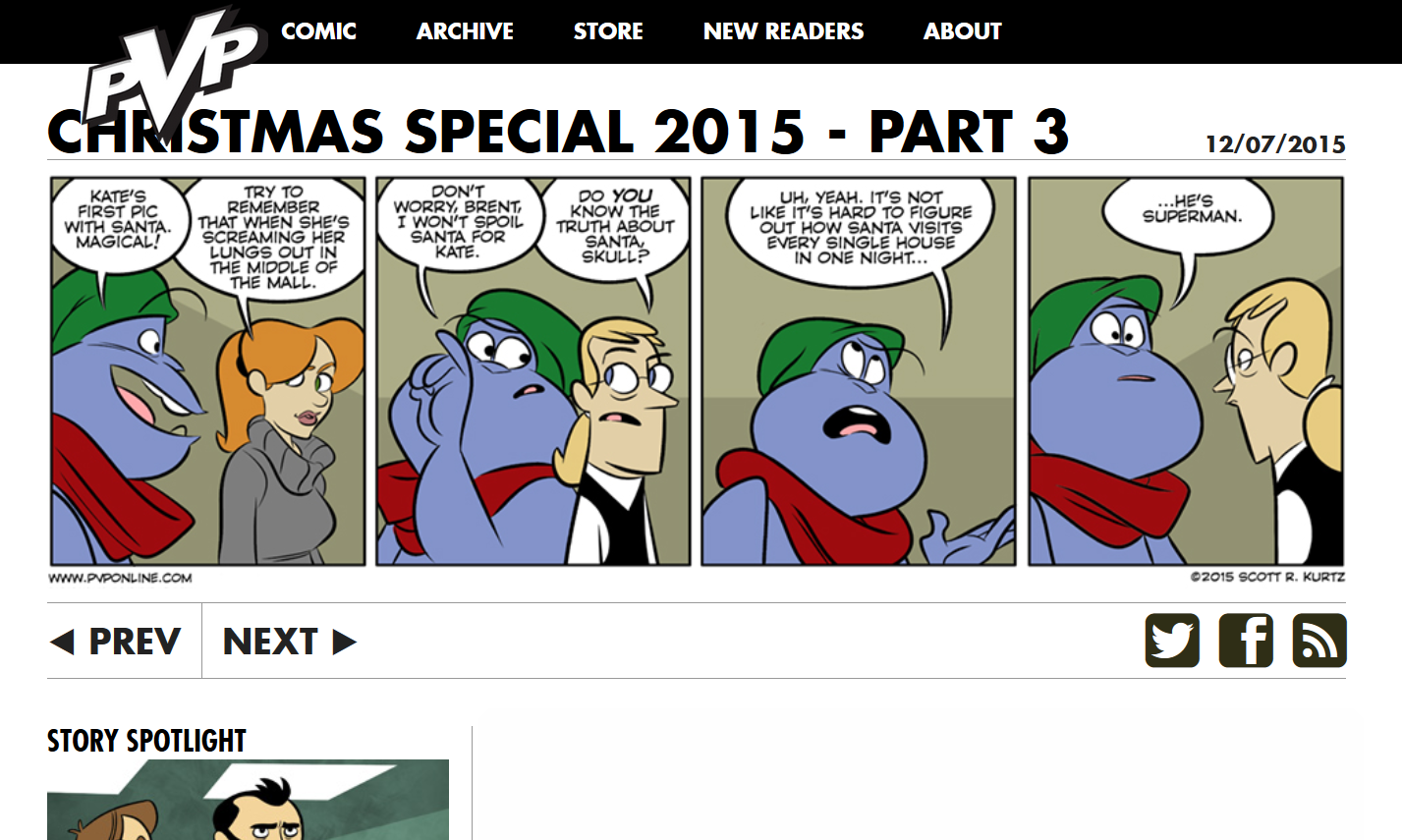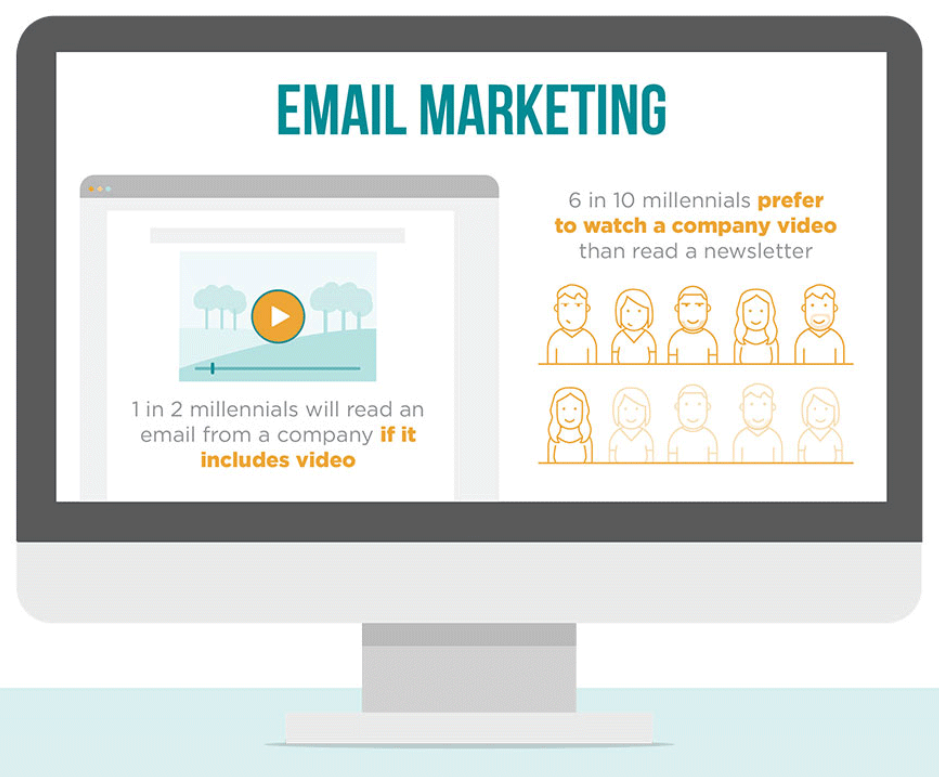Creating excellent content that attracts attention to your business can be a lengthy process, but it’s generally worth it in the end.
After all:
- 70% of customers have said that they prefer learning about a company through articles instead of traditional ads
- B2B customers typically make 57% of their purchasing decisions before they’ve even spoken to a company representative.
So it’s a really good thing when you’ve made a piece of solid content that will draw in new site visitors and convince them of how worthwhile and important your brand and products are.
After you’ve published something, the logical next step is moving on to developing another piece of content – but don’t forget completely about the older content on your site:
- Old content can be retooled to become relevant and fresh again very quickly.
- If a piece of content performed well six months ago, there’s a good chance there are still people out there it will resonate with who haven’t yet seen your work.
The Lifespan of a Piece of Content
A lot of work has gone into measuring just how long a piece of content stays relevant.
According to one study:
- It takes a full year for a blog article to reach 99% of its lifetime readers.
- While a blog article’s readership may have a relatively small readership after its first month, it’ll enjoy consistent smaller traffic for a long time after publication.
- An article’s readership can be boosted through promoting it throughout its lifespan.
- To estimate an article’s lifetime reach, multiply its monthly page views by 1.4x.
So while, typically, your content’s traffic dies off after a month or two, there’s still plenty of benefit hidden within the long tail of its continued reach.
For this reason, one of the best ways to make the most out of your content is to take advantage of its long-term potential and make sure it’s being seen by as many relevant people as possible.
Here’s how to do it…
Increase and Improve Your Social Media Marketing
Just because you’ve told your social media following about a new article, that doesn’t mean that they actually heard you.
- The average lifespan of a tweet, for example, is between 15 and 20 minutes.
- Facebook doesn’t fare much better: the average Facebook post will reach 75% of its readers within two hours.
If you’re only advertising your blog post or other content on social media once, it’s unlikely that even a small fraction of your potential audience will actually be alerted to it.
So what’s to be done?
Well, the trick to maximizing social media reach and engagement comes down to one simple technique: repetition.
- Make multiple social media posts for each piece of content.
- Don’t stop promoting your content on social media just because it’s old.
One marketer found that every time he retweeted about an old piece of content, he got 75% of the retweets as he had the previous time.
- This shows that even with repeated social media posts, your content will still generate a high level of engagement from followers.
Chances are your old content will still reach plenty of brand new readers long after its initial release.
- New followers are subscribing to your social media presence all the time, who won’t have seen your older content.
- Even your most loyal followers will miss a piece every now and then, and it’s good to give them multiple chances to see it.
- While someone may be disinterested when they first see you plugging an article or video on Facebook, a few months later they might be in a different situation where your old content is now suddenly relevant.
Continuing to regularly draw attention to your content in the weeks and months after its release can be very effective at increasing its reach, and as long as it’s done tactfully, it’s not going to annoy people who’ve already seen it.
As a matter of fact, one of the best groups to market your old content to are the ones who’ve already seen it:
- They’re most likely to be interested in reading it again, and
- It might spark a conversion the second time, or bring a repeat customer back to the fold.
There’s a reason YouTube includes a ‘Watch Again’ section on its homepage, encouraging you to replay something you’ve already seen.
The site knows that if you enjoyed a video a first time, there’s a good chance you’ll watch it again.
Re-advertising your content on social media can be done in a variety of ways:
- It can be done manually, in which case you control what articles are reposted at which times
- Alternatively, for a hands-free approach, automated tools like Meet Edgar or Buffer will take care of the hassle and will repost old content depending on parameters that you can set up in advance.
Alerting your social media followers to your content periodically over a few months after its release will help to drive the maximum traffic to your site, and will help lead more potential customers to conversion – getting you the most out of every piece of content you develop.
Repost Old Content
Have you ever seen Ridley Scott’s Blade Runner, starring Harrison Ford?
If so, which version have you seen?
There are actually seven different versions of the movie in existence, including the director’s cut and other edits which have been seen at different times and in different places.
(The above photo is actually a picture of computer game discs, but you get my point.)
While the movie was originally released in 1982, the most recent edit of the movie (known as The Final Cut) was released 25 years later, in 2007.
Each version of the movie featured slightly different scenes, sometimes with a different ending or alternative voiceovers to slightly change the viewing experience.
If that’s not a good example of getting maximum value out of a single piece of content, I don’t know what is.
If an article that you’ve written has proven popular, there’s a good chance that you can get more out of it.
- Revisiting an article after a few months gives site visitors new and old a chance to appreciate and engage with it again.
- Updating the article with new, relevant information or insight can make it fresh enough to convince readers of the original to look at it again
- New, up-to-date content also makes the article stand out enough to draw in a new group of readers who didn’t see it the first time.
What’s in a Name?
There’s another clever trick you can use when reworking old articles: a slight change in the focus of the content’s title can make it appeal to a completely different demographic.
- Slightly altering the way you promote your content a second time will draw in audiences who weren’t impressed by your first title.
- People will choose to look at your content if the title appeals to them.
- The more different titles you offer up, the better chance you’ll have for drawing in audiences.
This goes for posting on social media, too – draw attention to different aspects of the article every time you repost about it.
Buffer, for example, often uses a subtle focus change in their social media posts to draw in different audiences each time.
Here are a couple of different titles that have pointed to the same article:
- “Men are more likely to read blogs at night. Here’re 6 more counterintuitive Social Media facts”
- “These 7 social media mistakes are easy to make, but some counterintuitive advice could help you avoid them all”.
It’s also possible to get an idea of which approaches to content titles are the most popular through A/B testing the text in ads and other links to your site.
- This will help give you a good idea of which kinds of titles most appeal to visitors to your site.
- This means that when you draw attention to old content, you’ll be able to make every link count.
Ultimately, there’s nothing wrong with a little experimentation and repetition as you draw audiences towards your content.
Building Upon Older Content
Okay, so you’ve had a big hit with an article that’s travelled really far and brought a lot of new traffic and leads to your website. What’s your next step?
Let’s have another look at what Hollywood does in these situations…
Sequels. Lots and lots of sequels.
There are a lot of benefits for writing a followup article to something that’s previously been popular:
- It helps generate more site traffic on a topic you that already know appeals to potential customers.
- It pushes site visitors towards your original article on the subject, doubling down on leads and maximizing your content’s scope.
- It gives you further opportunities to build yourself up as an authority on the subject.
- It’s easier to write articles for which you’ve already undertaken initial research.
Revisiting an older topic or writing a companion piece can, therefore, help you to maximize not just the value you get from your older piece of content, but all the behind-the-scenes work you put into making it informative and attention-grabbing.
Different Types of Responses
Obviously, you want your new article to have a purpose beyond trying to copy the original – nobody wants a sequel simply because the original idea was popular.
Beyond straight ‘sequel’-style follow-up articles, there are a variety of other ways to expand upon an existing piece of content:
- Tie your second piece into relevant advancements in the debate, or new information that’s surfaced which is trending – a kind of ‘Where Are They Now?’ article building upon your previous piece.
- Collect together the comments or questions from readers of the original piece of content and answer or respond to them, giving greater clarity to the original content.
- Create a piece of content that contains a variety of real-life examples and case studies – these can include customer comments on your products if they’re relevant, and can show readers how the ideas you discussed in your original content can be used in a practical setting.
Beyond these ideas, if you’ve got a strong piece of content that users are responding to, consider exploring it further by building an entire series of content pieces around it, looking in-depth at every aspect of the original piece.
If your first piece was well received, there’s a good chance that same audience will want more of the same, which will:
- Keep them coming back to your website, or
- Encourage them to engage, convert or make a purchase.
Smart Website Design
Ultimately, you’re only going to get the most out of your content if people can see it.
Obviously, this means investing in solid distribution methods like:
- Social media
- Paid ads (where appropriate)
- Guest posts
In all of these instances, it’s crucial to getting the most out of your efforts that your site’s content is displayed in a clear, uncluttered, easily accessible manner, to make it as easy as possible for users to follow links through to your site.
But once visitors arrive on your site to enjoy your content, it’s incredibly important that you make it easy for them to find other related articles and content.
- If your site is designed so that it only shows off new content prominently, you’re missing out on opportunities to lead new visitors to older content.
- On the other hand, if your site makes it easy for visitors to move between pieces of content freely, it’ll increase the time they spend on the site and help lead to greater conversions.
One good example of a site that draws attention to older content is that of popular webcomic PvP.
The online comic strip has been running since 1998, and in that time, it’s amassed a collection of thousands of pieces of content.
In order to draw attention to content from this huge archive, many parts of the site content ‘Story Spotlight’ windows which are designed to keep users clicking through old comic strips.
The longer site visitors spend reading comics, the more likely they are to purchase a comic collection or other merchandise from the site’s store.
The site is, therefore, carefully designed to lead visitors organically from one piece of content to the other with minimal effort.
There are several ways that you can optimize your website’s design to effortlessly keep readers focused on your old content:
- Include easy to follow links to related articles at the bottom and to the side of each piece of content.
- Provide a user-friendly archive that’s easy to search through for older content.
- Spotlight older content on the main page of the site in order to draw visitors’ attention to established, popular content as well as brand new materials.
The aim is to make content accessible: if it’s hidden away within a large archive of content, nobody will be able to see it and they’ll miss out on the chance of engaging with something that might be extremely relevant.
The more you can put your older content under a spotlight, the more value you’ll get out of it.
Repurpose Old Content Into Other Forms
By repeatedly promoting the same content again and again, you want to be reaching out to a variety of different audiences each time.
- After all, shouting the same message at the same people repeatedly is going to feel like spam and won’t help your promotion.
- Plus, by failing to widen your net, you’re letting a lot of people who might engage with your content slip past without contact.
The thing is, not everybody engages with the same kinds of content.
Let’s take a look at the millennial demographic as an example:
- 60% of millennials prefer watching videos over reading newsletters
- 50% of millennials will read a marketing email if it contains a video
- 84% of millennials follow brands on Facebook
Obviously, the content formats that appeal to millennials will be different than the generations before.
- This means that even though the same message might appeal to several groups, restricting your content to a single publishing output limits its reach.
- In order to make the most of every piece of content, it needs to be distributed through as many channels as possible.
It’s not enough to post a text blog article on your website and then link to it once or twice (or even multiple forms) through Twitter.
Doing so will only allow you to reach a very small percentage of its intended audience.
Instead you need to make use of every available avenue. You can help your content to go further by converting it to suit different mediums.
For example, with a little editing and creativity, an old blog post can also easily become:
- A podcast
- A video
- An infographic
- A newsletter email
- A slideshow
There are plenty of other ways that content can be remixed and reworked as well – the important thing is to make your content as available as possible, and that often means giving it to audiences in a variety of different forms.
In addition to this, you really need to be making use of every available publishing platform to draw attention to old articles as well as new.
This includes:
- Social media sites (all of them)
- Newsletters
- Guest posts on other sites
- Direct correspondence with prospective customers and clients
- Paid ads
Chances are high that you’re already using these avenues and more to promote your brand new content, but the trick to making best possible use of all content is to give it continuous publicity.
The Big, Continuous Push
Many marketers believe in the 80/20 rule of content marketing – that only 20% of your time should be spent developing content, and the rest should be spent promoting it.
While this division of labor might not work for all content, it’s worth bearing in mind that it’s not enough to post a single article on Twitter once and call it done.
- You need to be continuously leading site visitors to all of your content, not just the newest stuff.
- You need to provide your content in as many forms as possible to appeal to all visitors.
- You need to make it easy for visitors to traverse your site and get their hands on all of your archived content.
It’s a real shame to spend a long time working on a beautifully crafted piece of content, only to use it once.
Do your best to take every possible advantage of your existing content, and your marketing efforts will see a genuine, sustained benefit as a result.
Have another suggestion for maximizing the impact of your content pieces? Share it by leaving a comment with your recommendations below:
Header Image: Flickr




